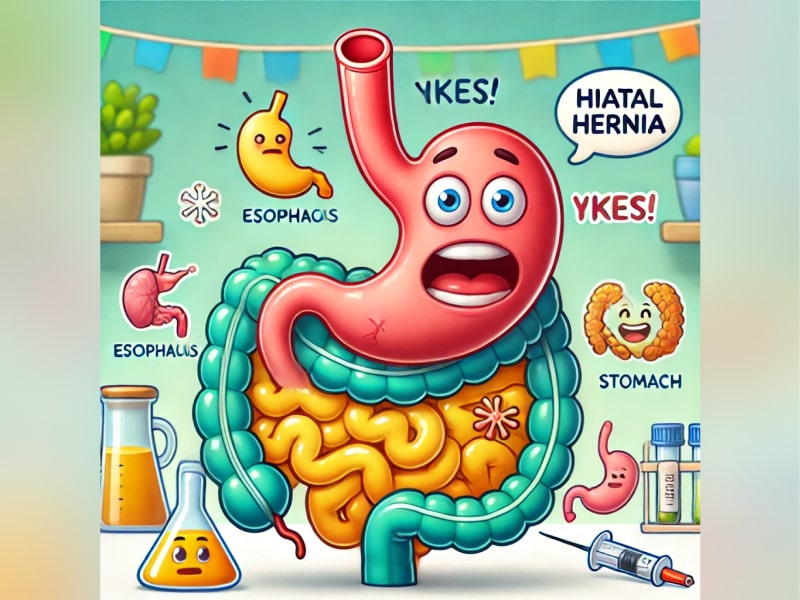Sağlıksız Kiloya İten Sebepler ve Sağlıklı Kilo Verme Yöntemleri
02 April 2022

A hiatal hernia is an anatomical disorder where the stomach moves upward into the chest cavity. This condition is associated with hernias in the esophagus and is often linked to gastroesophageal reflux disease (GERD). Hiatal hernias can present with various symptoms, ranging from mild to severe conditions.
Hiatal hernia typically manifests with gastroesophageal obstructive symptoms, including:
In individuals with a hiatal hernia, these symptoms can be mild or severe. For instance, a severe condition like gastric volvulus may arise, which requires emergency surgical intervention. Gastric volvulus occurs when the stomach twists on itself, cutting off blood flow, and necessitates urgent treatment.
Hiatal hernias are often associated with GERD and come in four different types. However, not every case of reflux disease involves a hiatal hernia. Other symptoms of hiatal hernia include:
Sometimes patients with a hiatal hernia might visit a cardiologist due to chest pain and similar symptoms, thinking they are having a heart attack. However, the actual issue might be a hiatal hernia, not a heart problem. If the patient's heart is healthy, these symptoms might be due to a hiatal hernia.
If you are experiencing symptoms of a hiatal hernia, you should consult your doctor. Early diagnosis and treatment can help prevent serious complications. Once diagnosed, your doctor will provide you with the most suitable treatment options. In severe cases, surgical intervention may be necessary.
A hiatal hernia is a condition where the stomach moves upward into the chest cavity, presenting with various symptoms. If you experience difficulty swallowing, painful swallowing, early satiety, shortness of breath, and chest burning, you should consult a doctor without delay. This article has provided information about the symptoms, types, and treatment options for a hiatal hernia. Do not ignore the symptoms for a healthy life and take the necessary precautions.